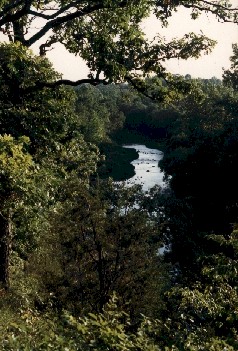The forested land along
rivers, streams, and lakes is known as the "riparian zone". Riparian comes
from the Latin word ripa, which means bank. Riparian zones are areas of
transition between aquatic and upland ecosystems, and they offer numerous, yet often
overlooked, benefits to wildlife and people. Only
within the past few decades have we come to realize the ecological value of riparian
areas. In fact, until the late 1960s riparian and stream ecosystems of the eleven
western United States were viewed as "sacrifice" areas, being dedicated
primarily to providing food and water for domestic livestock.  Although they comprise a small proportion of the total landscape, they are among the most diverse biological systems on earth  , and they perform important services to people which no amount of human effort
and technology can do as well. As our population increases, there will be increased
pressures to use riparian areas for a variety of commercial and recreational purposes.
It is vital that we all become involved in the conservation and restoration of these
areas. , and they perform important services to people which no amount of human effort
and technology can do as well. As our population increases, there will be increased
pressures to use riparian areas for a variety of commercial and recreational purposes.
It is vital that we all become involved in the conservation and restoration of these
areas. |
|

|